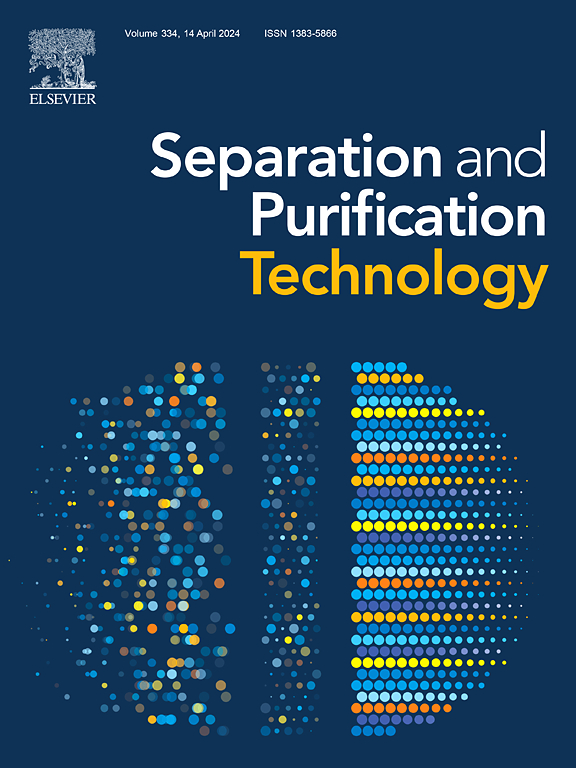Enhanced self-regenerating CPNs@ZIF-8/polyacrylic acid/chitosan hydrogel catalyst for synergistic adsorption and fenton-like degradation of erythromycin
IF 8.1
1区 工程技术
Q1 ENGINEERING, CHEMICAL
引用次数: 0
Abstract
Erythromycin (ERY) is a commonly used antibiotic whose overuse poses threats to ecosystems and human health, and its effective removal is a great challenge. A novel Coupling Adsorption-Catalysis (CAC) process was developed using a dual-functional copper peroxide nanoparticles@ZIF-8/polyacrylic acid/chitosan (CPNs@ZIF-8/PA/CS) hydrogel Fenton-like catalyst. The CAC process combines the adsorption capabilities of active functional groups on CPNs@ZIF-8/PA/CS with the catalytic activity of the encapsulated CPNs@ZIF-8. This synergistic approach enables efficient adsorption and degradation of ERY. Specifically, CPNs@ZIF-8/PA/CS exhibits an adsorption efficiency four times higher than that of CS alone and a degradation efficiency twice that of CPNs@ZIF-8 alone. Notably, the coordinated incentive mechanism in the CAC system arises from enhanced adsorption sites in CPNs@ZIF-8/PA/CS and hydrogen bonding with ERY molecules (confirmed by DFT calculations), which enhances ERY adsorption. Additionally, the shorter distance between adsorbed ERY and active species, along with improved mass transfer efficiency, ensures the feasibility of creating environmental value from ERY in aquatic environments through CAC. Moreover, CPNs@ZIF-8/PA/CS demonstrates significant advantages in recyclability and stability. The robust mechanical properties enable sustained catalytic degradation of ERY, ensuring high performance even after five cycles.

增强型自再生 CPNs@ZIF-8/聚丙烯酸/壳聚糖水凝胶催化剂对红霉素的协同吸附和芬顿类降解作用
本文章由计算机程序翻译,如有差异,请以英文原文为准。
求助全文
约1分钟内获得全文
求助全文
来源期刊

Separation and Purification Technology
工程技术-工程:化工
CiteScore
14.00
自引率
12.80%
发文量
2347
审稿时长
43 days
期刊介绍:
Separation and Purification Technology is a premier journal committed to sharing innovative methods for separation and purification in chemical and environmental engineering, encompassing both homogeneous solutions and heterogeneous mixtures. Our scope includes the separation and/or purification of liquids, vapors, and gases, as well as carbon capture and separation techniques. However, it's important to note that methods solely intended for analytical purposes are not within the scope of the journal. Additionally, disciplines such as soil science, polymer science, and metallurgy fall outside the purview of Separation and Purification Technology. Join us in advancing the field of separation and purification methods for sustainable solutions in chemical and environmental engineering.
 求助内容:
求助内容: 应助结果提醒方式:
应助结果提醒方式:


